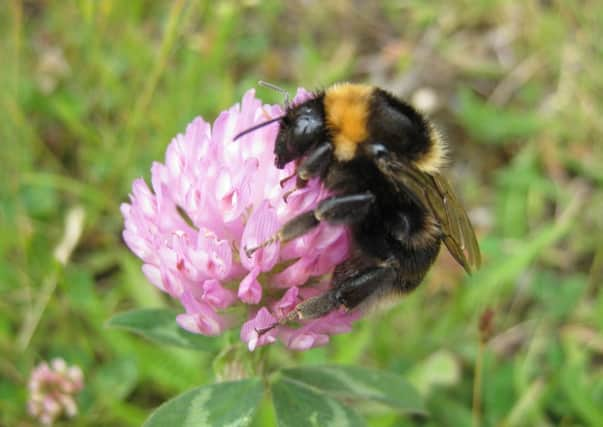Extinct bee continues tomake a strong come back


The short-haired bumblebee was declared extinct in the UK back in 1988.
But a joint conservation project has seen them re-introduced on Romney Marsh at an RSPB nature reserve.
Advertisement
Hide AdAdvertisement
Hide AdThe project, which began two years ago, involved carefully re-introducing queen bees collected in Sweden.
The first year was not such a success due to a very wet summer but last year the bees began to feel at home in their new environment.
Earlier this month a team of scientists and volunteers travelled to Sweden to collect queen bumblebees and brought them back to Royal Holloway University of London to be screened for disease.
A warm spring and a bumper crop of the bee’s preferred early foraging plant, white dead nettle, meant the team were able to collect all the queens in just two and a half days.
This latest batch were released on Romney Marsh on May 19.
Advertisement
Hide AdAdvertisement
Hide AdDr Nikki Gammans, project officer, said: “The signs are good - there are a lot of wild flowers coming into bloom thanks to the work of the local farming community and gardeners.
“We have already spotted other very rare species in the area including the ruderal bumblebee and the red shanked carder bee.
“With short-haired bumblebee workers being spotted last year and a new batch ready to go out, there are high hopes for the future of the species. We managed to collect all the queens in just two and a half days in Sweden and the warm spring has brought the release date forward by two weeks.
“A lot of people are following the fortunes of the bumblebees now both in Kent and further afield in the UK and in Sweden, and it’s fantastic talking to so many people who care so much about our threatened bumblebees.
Advertisement
Hide AdAdvertisement
Hide Ad“One thing I always tell people is that there is something everyone can do to help bees bounce back in the UK. Several bee species are in real trouble and have been in decline for many years, but if we all make an effort to plant the right native nectar-rich plants in our gardens then we can make a big difference. Lavender is my favourite – it looks and smells beautiful and bumblebees just love it.”
The short-haired bumblebee – known to scientists as Bombus subterraneus and in Sweden as the vallhumlor bee – went extinct in the UK in 1988. It was last recorded at Lydd, close to Dungeness.
After working with local farmers to create the ideal wildflower habitat for bumblebees in the area around Dungeness, Natural England, RSPB, Bumblebee Conservation Trust and Hymettus, kick started the project, with an initial pilot reintroduction two years ago.
There are 24 species of bumblebee in the UK – including seven commonly seen in most areas and seven threatened species which are priorities for conservation action.